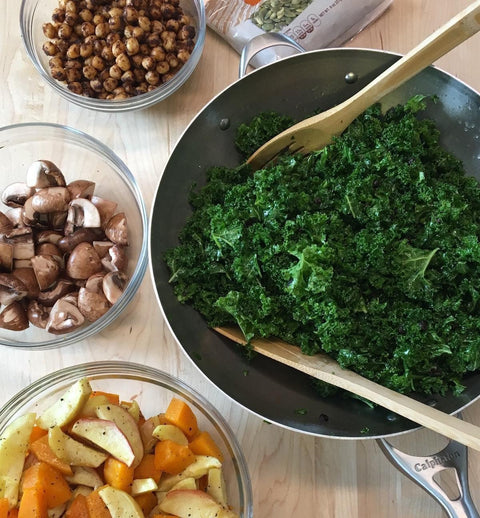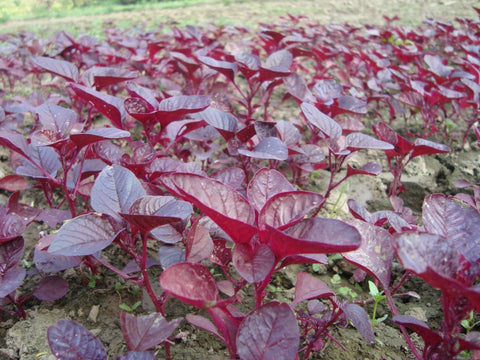Cooking for Nitric Oxide
The Best Ways to Cook Vegetables for Retaining Nutrients
Nitric oxide is a vital component of overall health. It’s a gas produced in the body when supplied with dietary nitrate found in key vegetables. Since nitric oxide production declines by about 50% by middle age, it’s important to increase the amount of nitrate-rich vegetables and antioxidant-rich legumes and fruits in our diets.
Eating a plant-based diet is proven to improve longevity, cardiovascular and overall health. In many cases, eating raw fruits and vegetables is best as it prevents the loss of enzymes that happens at about 117°F. When vegetables are cooked, the method we choose to prepare them can significantly impact their benefits. Depending on the method of preparation, cooking depletes some nutrients while others are actually increased, like nitrate.
Foods high in nitric oxide
The fact is, no foods are high in nitric oxide because nitric oxide is a gas that is released in blood vessels. The right foods and the right cooking methods help boost nitric oxide in different ways. Foods rich in nitrate, antioxidants, the enzymes L-arginine and L-citrulline, N-acetylcysteine (NAC), Omega fatty acids, and B-vitamins (B6, folic acid and B12 ) all support nitric oxide production. But it’s important to prepare these foods in ways that retain or boost their nutritional value and increase nitric oxide.
There are three significant groups of nitrate-rich vegetables: leafy greens, cruciferous vegetables, and root vegetables. For amplifying nitrate levels, here is a list of high nitrate vegetables to consider:
- Beets and their greens
- Red Spinach
- Green Spinach
- Arugula
- Kale
- Swiss Chard
- Cilantro
- Mustard Greens
- Bok Choy
- Lettuce
These nitrate-rich foods can be eaten raw, pickled, pressure cooked, boiled, steamed, sauteed, roasted, microwaved, or air fried. A remarkable characteristic of nitrate is its heat resistance; cooking high-nitrate vegetables loses little, if any, nitrate.
Factors that impact nitrate levels of vegetables

There is a common list of nitrate-rich foods that feature staple vegetables like the list above. Every vegetable varies in nitrate content. Here are some of the factors that cause nitrate variations:
- Growing region
- Cultivation frequency (over-cultivation depletes nutrients in the soil)
- Weather conditions
- Soil quality
- Food production processes
- The type of fertilizers used
- Amount of fertilizers used
- Organic vs. Inorganic
- Light intensity
- Harvesting time
- Water supply
- Plant age
- Soil pH
- Storage conditions
- Post-harvest storage
These are just the known conditions. There may be unknown conditions that will be uncovered as new research unfolds. It’s important to know that variations in nitrate levels occur. For example, nitrogen uptake in crops, and thus nitrate levels, tends to increase in the fall season and are generally lower in spring as a result of overall precipitation, temperature, and pH levels during these respective seasons.
What is the best way to cook nitrate-rich vegetables?
A review of multiple studies examined the best preparation and cooking methods for maintaining vegetable nutrients. According to the metadata analysis, it was determined that steaming vegetables was the best method for maintaining nutrient quality. Boiling vegetables lowers nitrate levels and depletes important nutrients like thiamine, folate, Vitamin B6, Vitamin B12, and Vitamin C.
When cooking for nitric oxide, you can use various heating methods because nitrate-rich vegetables retain the majority of their nitrate levels when heated.
For the sake of demonstrating the impact of heat exposure to nitrate-rich vegetables, one study compared nitrate contents of beet leaves that were raw, cooked, and fried.
Raw Beets Leaves - 439 mg/kg
Beets Leaves Dried at 140°F - 410 mg/kg
Fried Beets Leaves - 573 mg/kg
While it’s not suggested to fry beet leaves, this study does show that high-nitrate vegetables can be exposed to extreme levels of heat including, baking and roasting, while maintaining steady levels of nitrate. However, while there won’t be considerable amounts of nitrate loss from heat, there will be antioxidant loss.
A happy medium between increasing nitrate levels and maintaining antioxidants is a quick stir fry for retaining the most nutritional value of sustained nitrate levels and antioxidants. The time the food touches heat is minimal, decreasing the loss in nutritional value than other heating techniques. A no-oil frying method can be achieved by adding minimal amounts of water or broth (1-2 tablespoons) or using an air fryer.
Cooking fruits - are antioxidants destroyed by heat?

Antioxidants are incredibly sensitive to heat. The majority of antioxidants that help support nitric oxide production in the body are fruits. It’s best to eat most fruits raw and avoid destabilizing their most significant health components. Like with vegetables, boiling fruits creates the most loss of nutrients as they leach into the water. But some of those lost antioxidants, nitrates, and other nutrients can be recovered by using the water to make a tea or soup.
When it comes to the complex bio makeup of various fruits and vegetables, there are some general rules to follow, but it’s important to know that each plant must be prepared uniquely to maximize its individual benefits. For example, one study found that freezing broccoli and garlic improved their antioxidant activity, but the opposite was true for onion and cauliflower. With that said, there is some conventional wisdom to follow.
General tips for maintaining antioxidant properties in fruits:
- Avoid or minimize heating
- Eat raw when possible
- Freeze to maintain antioxidant levels in most cases
- Griddling, microwave cooking, and baking alternately produce the lowest losses of antioxidants
- Pressure-cooking and boiling lead to the greatest losses of antioxidants
Industrial food processing and oxidation of antioxidant-containing foods have various impacts that are still being studied. There should be consideration of the antioxidant properties of heavily processed foods and the positive and negative effects on various fruits and vegetables, as seen in the table below.







Comments (0)
There are no comments for this article. Be the first one to leave a message!